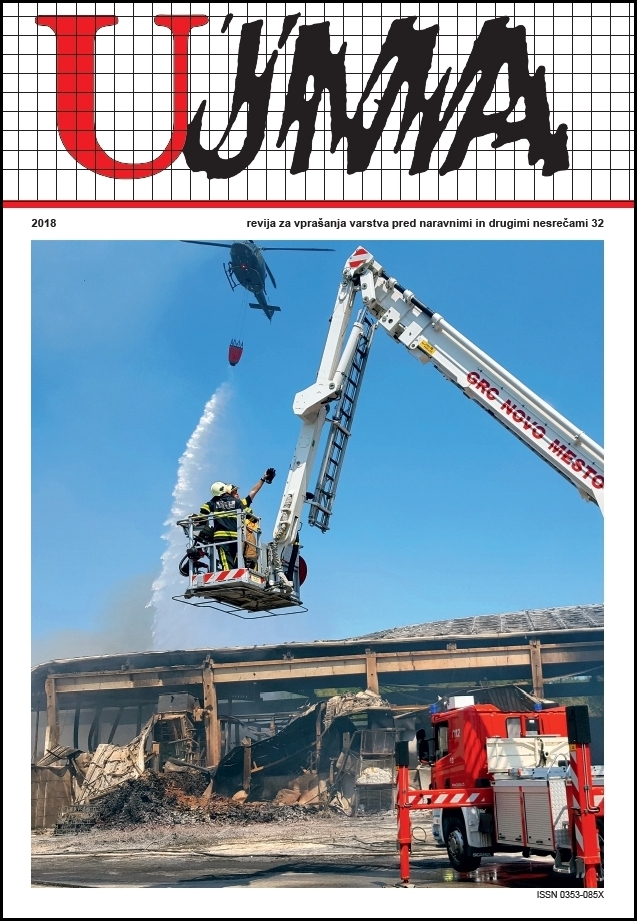THE HISTORICAL DEVELOPMENT OF THE THEORETICAL MODEL OF COMPREHENSIVE EMERGENCY MANAGEMENT
Abstract
Social sciences do not use a single comprehensive theoretical approach to disaster research; numerous theoretical concepts, classifications and models have been developed. The most content-rich and widely-used model in social sciences is the Comprehensive Emergency Management model (CEM). This model also has the greatest impact on the development of the practice and profession of emergency management. On the one hand, Comprehensive Emergency Management connects into a complete whole the activities carried out in society concerning emergencies, and on the other hand, it divides these activities into inter-connected phases: prevention, preparedness, response, and recovery. Its formation was the result of a long-term development of science and society, from the initial interpretation of disasters as scourges of God, to the understanding of disasters as socialy-conditioned, occurring in the form that is presented in this model. The process of development progressed from the realisation that, when it came to emergency management, it was possible to identify periods or phases in which different activities have certain common characteristics, to the realisation that the phases followed a specific chronological order, and finally, to the realisation that the types and levels of activities within one phase have a profound impact on the following period of emergency management, as well as on the management of any future emergencies. The development progressed from a phase model to a linear model, and finally to a cyclical model of understanding and dealing with disasters.
References
Baird, A., O’Keefe, P., Westgate, K. N., Wisner, B., 1975. Towards an explanation and reduction of disaster proneness. Occasional paper no.11, University of Bradford, Disaster Research Unit. http://ipcc−wg2.gov/njlite_download.php?id=5553 (27. februar 2016).
Carr, L. J., 1932. Disasters and the sequence−patern concept of social change. American Journal of Sociology, 38: 207−218. http://courseweb.lis.illinois.edu/~katewill/fall2009−lis590co/extra%20optional%20disaster%20readings/Carr_1932_DisasterSequencePatternConcept.pdf (28. december 2015).
Coetzee, C., van Niekerk, D., 2012. Tracking the evolution of the disaster management cycle: A general system theory approach. Jàmbá: Journal of Disaster Risk Studies 4(1), Art. #54. http://dx.doi. Org/10.4102/jamba.v4i1.54 (27. februar 2016).
Drabek, T., 1991. The evolution of emergency management. V: Emergancy Management: Principles and Practice for Local Government, ur. Thomas E. Drabek, 3−30. Washington D. C., USA: International City Management Association.
Dynes, R. R., 2008. The Dialogue between Voltaire and Rousseau on the Lisbon Earthquake: The Emergence of a Social Science View. V: International Journal of Mass Emergencies and Disasters, marec 2000, vol. 18, no 1, stran 97–115. http://www.ijmed.org/articles/166/download/ (27. april 2018).
Emergency Management Institute. ICS Resource center. https://training.fema.gov/emiweb/is/icsresource/ (8. februar 2016).
Etkin, D., 2015. Disaster Theory. An Interdisciplinary Approach to Concepts and Causes. UK, USA: Elsevier.
Haddow, G. D., Bullock, J. A., in Coppola, D. P., 2008. Introduction to Emegency Management. Thid Edition. US: Elsevier.
Jensen, J., 2009. Emergency Management Theory: Unrecognised, Underused, and Underdeveloped. V: Integrating emergency Management Studies into Higher Education, ur. Jessica A. Hubbard, 7−24. USA: Public entity Risk Institute.
Jeraj, J., 2016. Vodenje odziva na nesreče v kontekstu družbenih sprememb: študija primera Slovenije v času pred osamosvojitvijo in po njej (magistrsko delo), Ljubljana, Fakulteta za družbene vede.
Jeraj, J., 2018a. 100. obletnica nesreče v Halifaxu, Kanada, in začetek družboslovnega raziskovanja nesreč. V tej številki revije Ujma.
Jeraj, J., 2018b. Vodenje v Civilni zaščiti nekdaj in danes. V tej številki revije Ujma.
Lindell, M. K., Prater, C., in Perry, R. W., 2007. Introduction to Emergency Management. US: Wiley.
McEntire, D. A., 2004. The Status of Emergency Management Theory: Issues, Barriers, and Recommendations for Improved Scholarship. Paper presented at the FEMA Higher Education Conference, Emmitsburgh. https://www.training.fema.gov/hiedu/downloads/david%20mcentire%20−%20%20status%20of%20emergency%20management%20theory.pdf (16. januar 2016).
McEntire, D. A., 2008. A critique of emergency management policy: Recommendations to reduce disaster vulnerability. International Journal of Public Policy 3 (5/6): 302−312.
National Governors’ Association Center for Policy Research and United States Defense Civil Preparedness Agency, 1979. Comprehensive Emergency Management: A Governor's Guide. Washington: Dept. of Defense, Defense Civil Preparedness Agency. https://training.fema.gov/hiedu/docs/comprehensive%20em%20−%20nga.doc (27. februar 2016).
Prince, S. H., 1920. Catastrophe and social change – based upon a sociological study of the Halifax disaster. New York. http://www.gutenberg.org/files/37580/37580−h/37580−h.htm (28. december 2015).
Ušeničnik, B., 1988. Varstvo pred naravnimi in drugimi nesrečami. Ujma, 1, 78–85.
Ušeničnik, B., 1993. Smernice za izvajanje zaščite in reševanja. Ujma, 6, 241–243.
Ušeničnik, B., 1996. Varstvo pred naravnimi in drugimi nesrečami do leta 2000. Ujma, 9, 172–176.
Whittaker, H., 1978. State comprehensive emergency management: final report of the Emergency Preparedness Project, Center for Policy Research, National Governors' Association. Washington: National Governors' Association. http://hdl.handle.net/2027/umn.31951d00678253a (27. februar 2016).
Whittaker, H., 1979. State Comprehensive Emergency Management: Final Report of the Emergency Preparedness Project, Center for Policy Research, National Governors' Association. Washington, D. C.: Printed for Defense Civil Preparedness Agency.
Wisner, B., Gaillard, J. C., in Kelman, I. (ur.), 2012. Routledge Handbook of Hazards and Disaster Risk Reduction. Abingdon: Routledge.
Downloads
Published
Issue
Section
License

This work is licensed under a Creative Commons Attribution-NonCommercial-NoDerivatives 4.0 International License.
The articles are made available to the public under Creative Commons Attribution-NonCommercial-NoDerivatives 4.0 International (CC BY-NC-ND 4.0).


